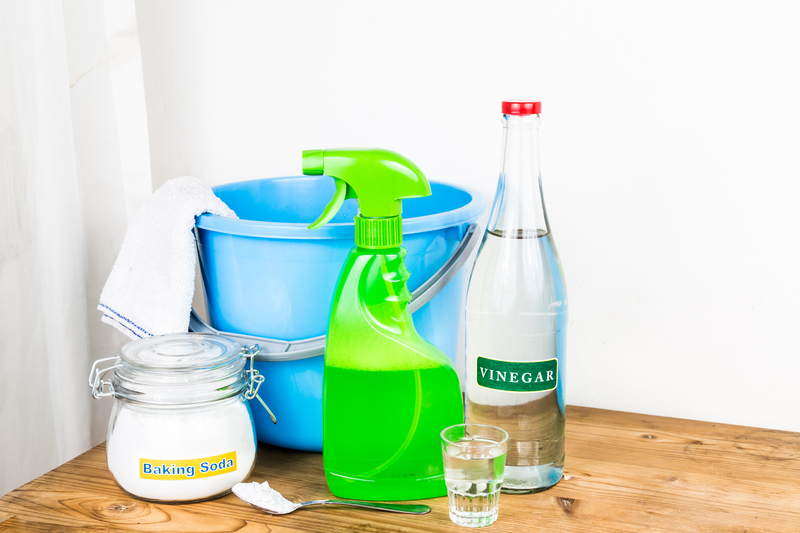Secrets to Keeping Window Sills Mould-Free and Clean
Posted on 10/09/2025
Secrets to Keeping Window Sills Mould-Free and Clean
Window sills often add charm to any room, allowing sunlight to stream in and offering space for plants, books, or decorative items. However, overlooking their maintenance can quickly turn these attractive features into breeding grounds for mould, mildew, and lingering dirt. The key to a bright, healthy home environment lies in mastering the secrets to keeping window sills mould-free and clean. This comprehensive guide breaks down simple, practical steps for homeowners, whether you're dealing with wooden, vinyl, or metal sills.
Why Do Window Sills Attract Mould and Dirt?
Before exploring how to maintain pristine window ledges, it's critical to understand why these spaces are so susceptible to grime and fungal growth. Several factors contribute to this:
- Condensation: Excess moisture from indoor humidity or drastic temperature changes can accumulate on window panes and drip onto the sill.
- Poor ventilation: Limited airflow traps moisture near the window area, providing the ideal environment for mould spores to thrive.
- Dirt buildup: Outdoor dust and debris easily settle on window ledges, particularly if windows are left open or sills are seldom cleaned.
- Neglected cleaning: Infrequent cleaning allows grime, pet hair, pollen, and dead insects to pile up, increasing the risk of mould formation.
Key Takeaway:
Consistent attention is pivotal in keeping your window ledges clean and safe from mould growth.

Understanding Mould: Health Risks and Warning Signs
Mould is not simply an aesthetic nuisance; it poses direct health hazards, especially for individuals with allergies, asthma, or weakened immune systems. It thrives in moist, warm environments, and window sills--especially in kitchens and bathrooms--make a perfect home for it.
- Health Risks: Prolonged exposure to mould spores may lead to respiratory difficulties, eye irritation, skin rashes, sinus congestion, and worsen asthma symptoms.
- Warning Signs: Watch out for musty odours, discoloration (black, green, or brown patches), and visible fuzzy growth on window sills.
Did You Know?
Even a small amount of mould on your window sills can multiply rapidly if left unaddressed. Acting quickly at the first sign is vital.
Essential Materials for Cleaning and Preventing Mould on Window Sills
Invest in these common supplies to maximize your routine window sill cleaning and anti-mould strategies:
- Microfiber cloths or soft rags
- Soft-bristled brush (to get into corners and crevices)
- Mild detergent (avoid harsh chemicals for painted or wooden sills)
- White vinegar or baking soda (natural mould deterrents)
- Spray bottle (for DIY cleaning solutions)
- Gloves and safety mask (for protection during mould removal)
- Disinfectant spray
- Paper towels
Step-by-Step: How to Clean Window Sills and Remove Mould
1. Clear the Window Sill
Remove any plants, decorative items, or accumulated clutter from the window ledge. Leaving items here constantly can trap moisture and invite mould.
2. Dry-Dust Thoroughly
Use a dry microfiber cloth or vacuum cleaner attachment. This removes loose dust, cobwebs, and debris. Pay special attention to cracks and grooves.
3. Prepare a Gentle Cleaning Solution
Mix a few drops of mild detergent with warm water in a bucket. If you're dealing with visible mould, use a 1:1 solution of white vinegar and water, which naturally disinfects and breaks down fungal spores.
4. Scrub Surfaces Carefully
Dip your cloth or soft brush in the solution and gently scrub the windowsill, focusing on corners where mould and grime collect. For stubborn spots, sprinkle a small amount of baking soda and let it fizz with vinegar before scrubbing.
5. Rinse and Dry Completely
Wipe away cleaning residue with a damp, clean cloth, then dry thoroughly with paper towels or a fresh microfiber towel. Leaving moisture behind encourages future mould growth!
6. Disinfect and Prevent Recurrence
Finish by spritzing the area with a disinfectant spray or diluted vinegar solution. Let it air-dry. Dispose of contaminated cleaning cloths and wear gloves when handling mould.
- Tip: For painted or wooden sills, always wring out your cleaning cloth to prevent excessive moisture from seeping into the material and causing warping or paint damage.
Preventing Mould on Window Sills: Long-Term Strategies
Prevention is always better than cure! The following proactive habits will keep your window ledges mould-free and clean year-round:
1. Improve Ventilation
- Open windows daily for at least 5-10 minutes to let damp air escape, especially in kitchens and bathrooms.
- Use exhaust fans or dehumidifiers in humidity-prone areas.
2. Address Leaks and Condensation Promptly
- Check for leaky frames, broken seals, or condensation between panes. Repair promptly.
- Wipe away any moisture that collects on glass or ledges after rain, cooking, or showering.
3. Choose Window Coverings Wisely
- Avoid heavy drapes that block airflow close to the window. Choose blinds or curtains you can easily pull back.
- Don't let curtains rest on the sill, trapping moisture underneath.
4. Regular Dusting and Cleaning Routine
- Dust window sills weekly and deep-clean with a vinegar solution at least once a month.
- Clean up spills or standing water immediately.
5. Keep Plants and Items Off When Not Needed
- Rotate the placement of flowerpots or decorative objects to prevent dampness from being trapped underneath.
- Use trays under plants to catch excess water and prevent it from seeping onto the wood or painted surface.
Natural Remedies for Mould Prevention
Many prefer natural cleaning solutions over harsh chemicals to keep their homes clean and mould-free. Try these eco-friendly options for window sills:
- White vinegar: Its acidity kills up to 82% of mould species. Spray and let stand for an hour before wiping clean.
- Baking soda: Mixed with water as a paste, it scrubs stains and neutralizes odours.
- Lemon juice: Adds a fresh scent and antibacterial properties; mix with water in a spray bottle.
- Tea tree oil: Add a few drops to water and spray onto sills for anti-mould power.
Bonus: These ingredients are safe for pets, children, and do not release harmful fumes.
Window Sill Cleaning for Different Materials
Knowing your window ledge material can help you choose the safest and most effective cleaning method.
Wooden Window Sills
- Use minimal water; excess moisture causes swelling or rot.
- Apply diluted vinegar or dish soap. Wipe dry immediately.
- Polish with furniture oil or a wood sealant for added protection.
Vinyl or PVC Window Sills
- Easy to clean with soap and water. Resistant to most mould.
- Stubborn stains can be treated with baking soda paste.
Aluminium or Metal Window Sills
- Wipe with a damp cloth and mild detergent.
- Remove oxidation or water stains with a solution of vinegar and water.
Always test a small area before applying any new cleaning product to your window sills!
How Often Should You Clean Window Sills?
Establishing a cleaning schedule is the most effective way to ensure mould-free window ledges. Frequency can depend on your climate, home activities, and local weather conditions. As a general rule:
- Light dusting: Every week (especially if you open windows often).
- Wet cleaning and spot treatment: Once a month.
- Deep clean for mould or mildew: As soon as you see or smell signs of growth.
Consistent care prevents minor issues from turning into stubborn stains or health risks.
What to Do If Mould Keeps Returning?
If you've followed all the best practices and still battle recurring mould on your window ledges, the underlying issue may be:
- Poor insulation or window leaks allowing in rain or moist air
- High indoor humidity (above 60%)
- Hidden or structural mould growth behind window frames
Solution: Consult a window professional or a mould remediation specialist. You may need to repair caulking, improve weatherstripping, or upgrade to insulated windows.
Frequently Asked Questions: How to Keep Window Sills Clean
Can I use bleach to remove mould from window sills?
While bleach is a powerful disinfectant, it can damage paint and wood finishes, and its strong fumes aren't safe for enclosed spaces. Use vinegar or hydrogen peroxide as safer alternatives.
How do I stop condensation on my windows?
Improve room ventilation, keep blinds open during the day, use a dehumidifier, or apply window insulation film in winter.
Are homemade cleaners effective for mould removal?
Yes! White vinegar, baking soda, tea tree oil, and lemon juice are all natural, gentle, and effective at both cleaning and sanitizing window ledges.

Summary: Your Window Sill Care Checklist
- Inspect window sills regularly for dirt, mould, and moisture spots.
- Establish a cleaning routine using gentle, natural agents.
- Maximize air flow and reduce humidity in problem areas.
- Address water leaks immediately to prevent long-term damage.
- Invest in proper window installation and insulation if mould persists.
Conclusion: The Secret to Long-Lasting, Mould-Free Window Sills
Keeping window sills mould-free and clean isn't a mystery. With regular care, prompt attention to moisture, and the right preventive measures, you can protect your home's beauty and your family's health. Routine cleaning, watching for condensation, and using natural remedies keep window ledges spotless, shining, and safe for years to come.
Let your windows offer a fresh, healthy view--inside and out--by making mould prevention part of your regular home care habits today!





